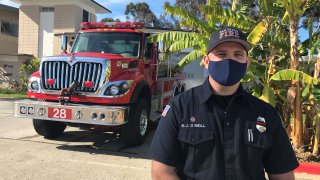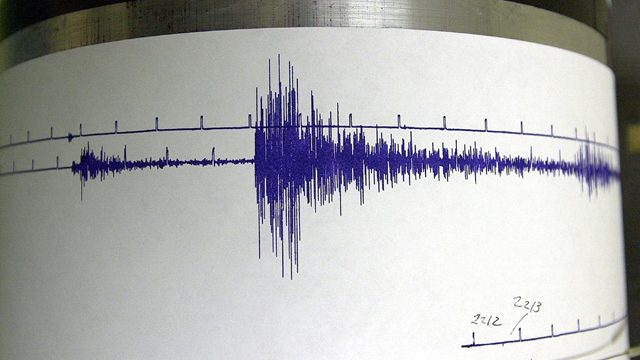
San Diego Fire-Rescue firefighter Kyle O’Neill originally told NBC 7 that "at least 100 San Diego firefighters have been diagnosed with cancer." In the interests of being more specific, that was changed to "O’Neill said 100 SDFD firefighters were diagnosed with cancer during the time SDFD has been tracking occupational cancer, about five years. Between 2018-20, 22 SDFD firefighters were diagnosed with occupational cancer, according to a department spokeswoman." -- Ed.
The Cancer and Health Coordinator for the San Diego Fire-Rescue Department says the month of January means an opportunity to educate and spread awareness of an unseen but deadly threat facing all fire crew members.
January is Fire Fighter Cancer Awareness Month.
“I think, overall, we collectively understand we’re at greater risk,” said SDFD firefighter Kyle O’Neill, 38.
Get Southern California news, weather forecasts and entertainment stories to your inbox. Sign up for NBC LA newsletters.
O’Neill is a 17-year veteran of the department who was diagnosed with cancer in May 2016. He has been in remission for four years.
O’Neill said that 100 SDFD firefighters were diagnosed with cancer during the time SDFD has been tracking occupational cancer, about five years. Between 2018-20, 22 SDFD firefighters were diagnosed with occupational cancer, according to a department spokeswoman. The cases are considered occupational cancer, likely a result of chemical exposure while in the line of duty, according to O’Neill.
According to the International Fire Fighters Association (IAFF), occupational cancer is the leading cause of line of duty deaths in the fire service. In 2019, more than 75% of the names of firefighters added to the Fallen Fire Fighter Memorial Wall of Honor in Colorado Springs, Colorado, were of members who died from occupational cancer, according to the IAFF web page.
California
News from across California
O’Neill says a study from the Centers for Disease Control of firefighters dating back to 1950, shows firefighters have a 9% higher risk of being diagnosed with cancer, and a 14% higher mortality rate connected to cancer.
O’Neill, whose cancer has been in remission for four years, says research shows there are around 200 different chemicals -- known carcinogens -- at all fires.
“Latex paints on the wall, you have furniture that’s made of different synthetic materials, plastics, etc. And when those things burn, we know through research that those chemicals are really toxic,” says O’Neill.
Part of O’Neill’s administrative duties include educating his colleagues, which means sharing information on how to limit chemical exposure and minimize their potential cancer risks.
It’s meant a culture change of sorts for some employees, who are now doing a much better job of recognizing and mitigating the risks, according to O’Neill.
“Firefighters are doing a better job now because they understand what they’re up against and they know the faces of their fellow firefighters who have contracted cancer,” said O’Neill.
He says exposure occurs in three ways: inhalation, skin absorption, and ingestion. He recommends all crews remove contaminants at each fire scene and bag and store contaminated gear.
“And then follow that up by getting back to the fire station, and get in the shower as soon as possible to really promote the reduction in exposure and also get, give our firefighters the best fighting chance of not getting cancer," says O’Neill.
Proactive action is also being taken at all 49 fire stations in the City of San Diego, which includes installation of exhaust extraction systems and the purchasing of commercial-grade washing machines that meet National Fire Protection standards for cleansing personal protective equipment.



